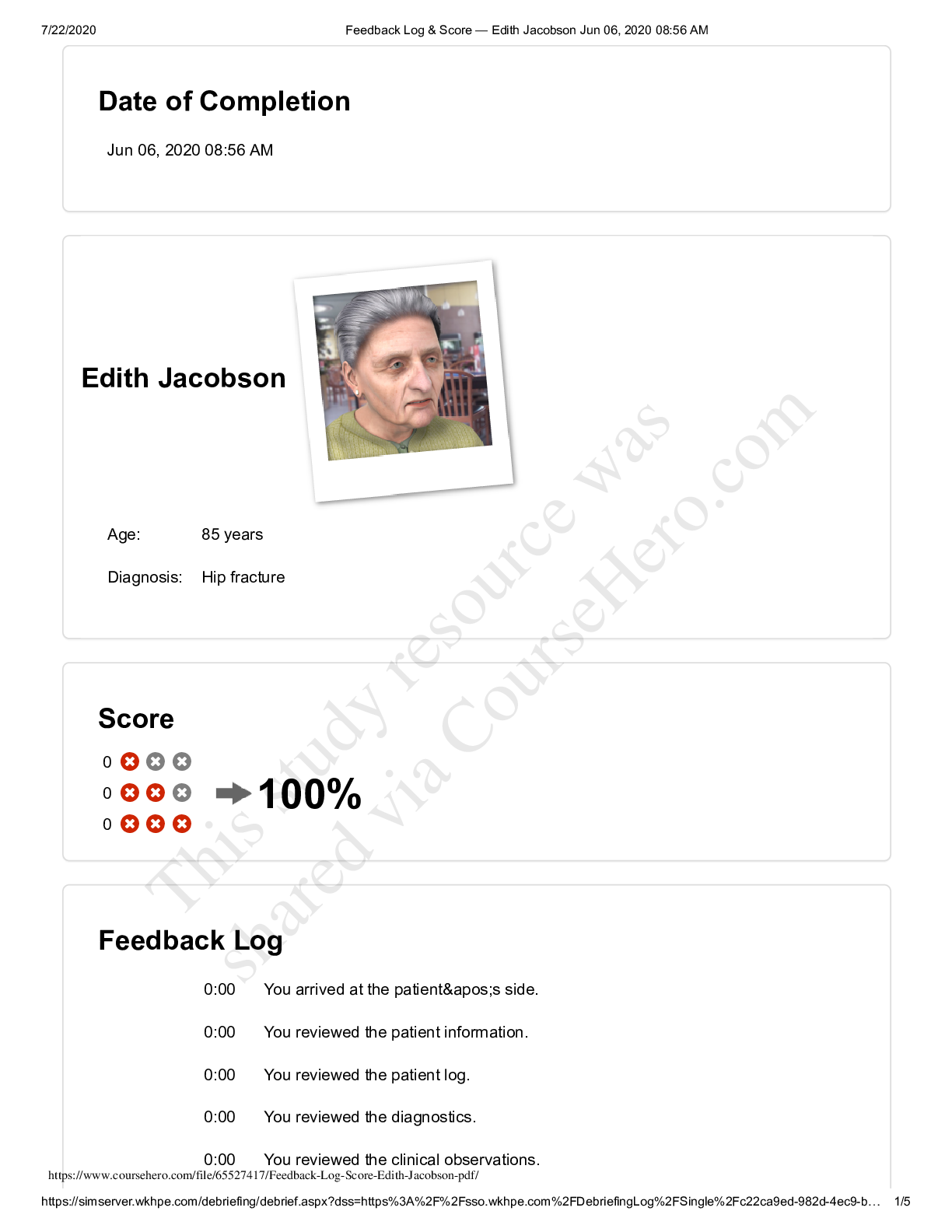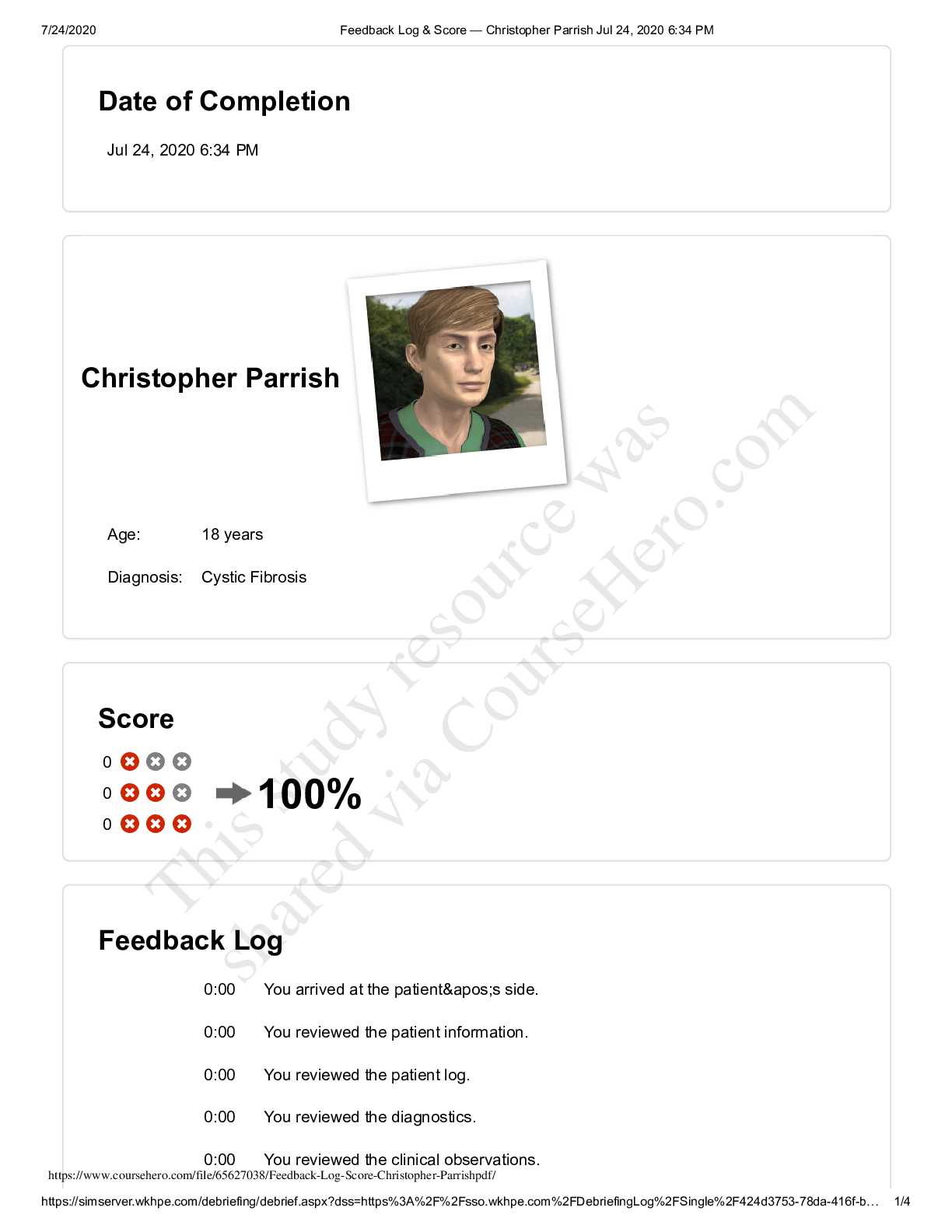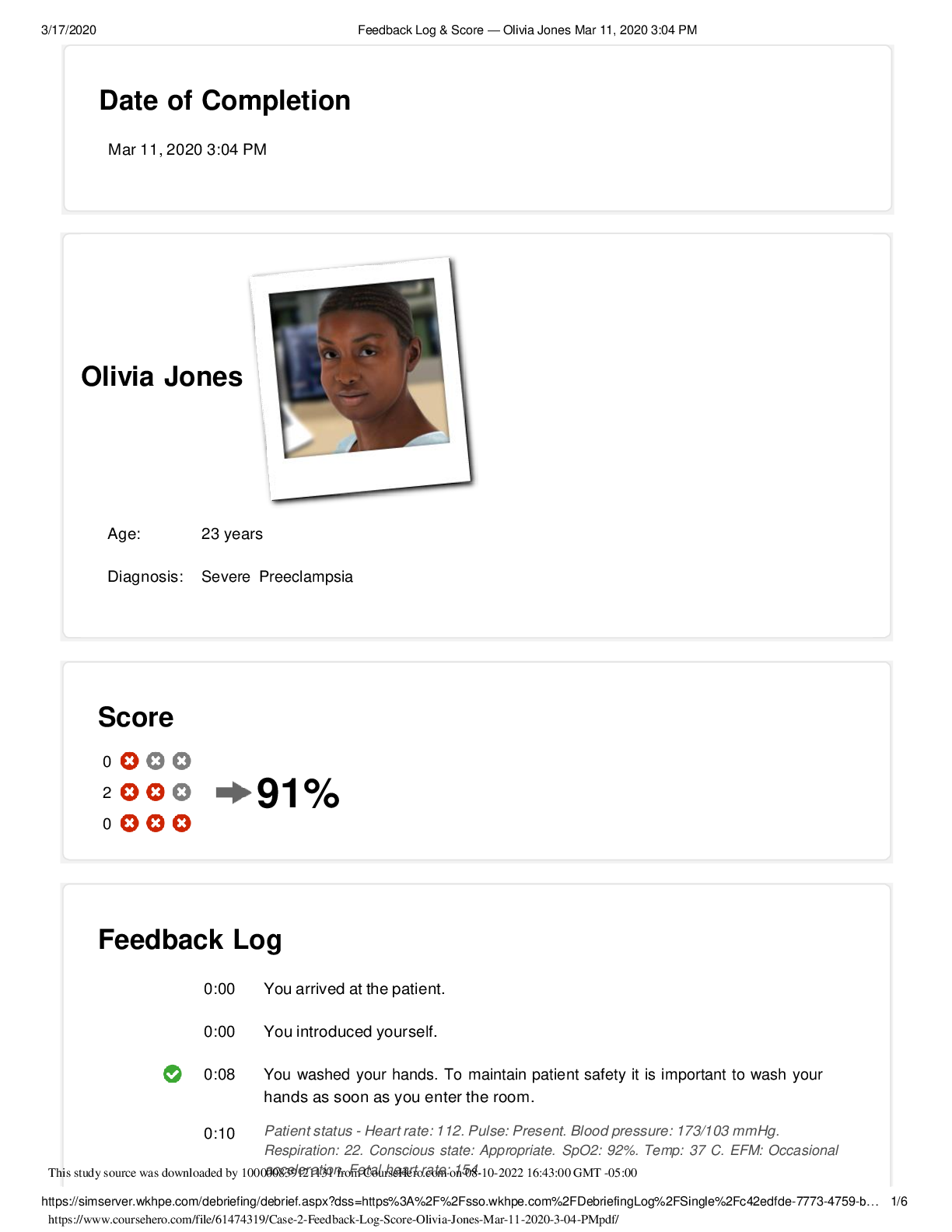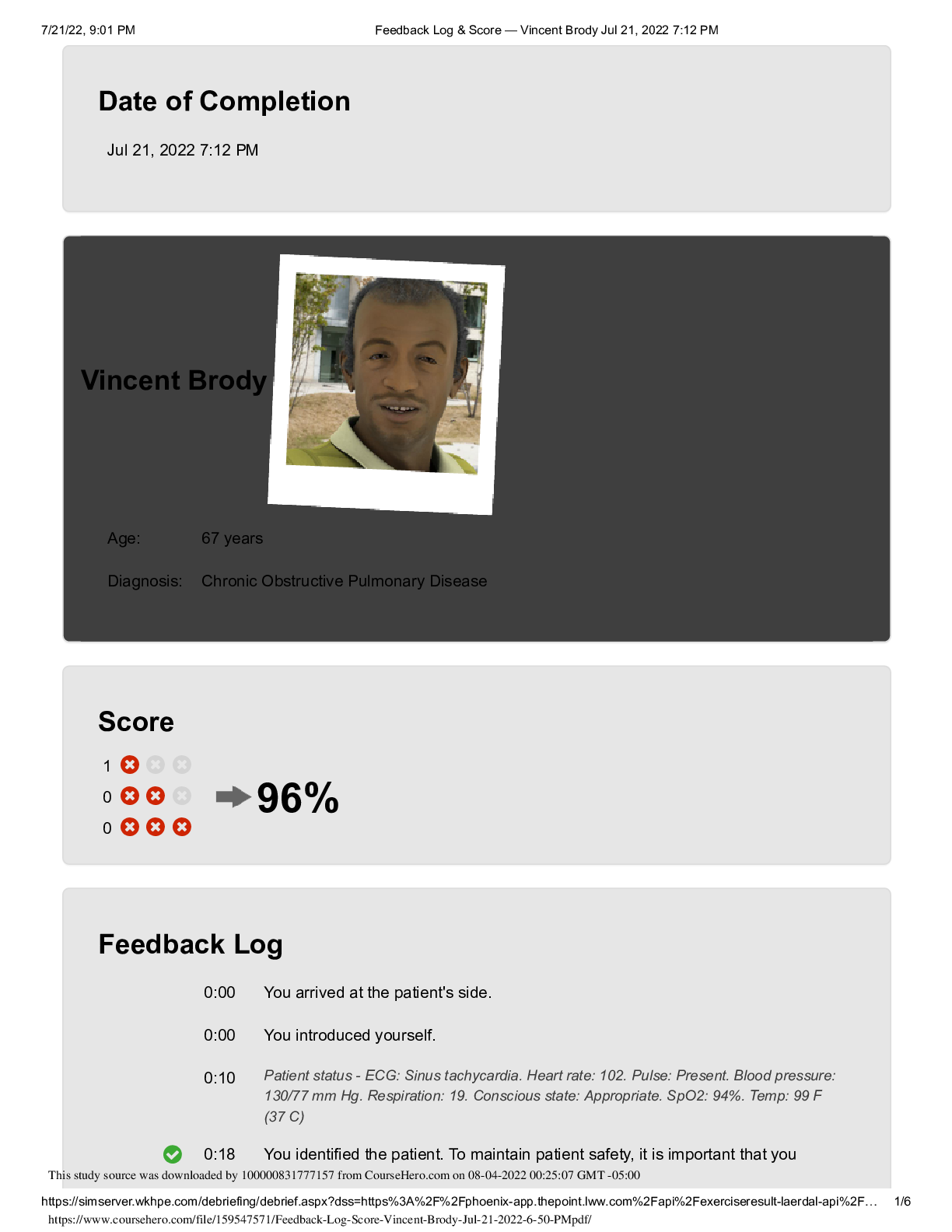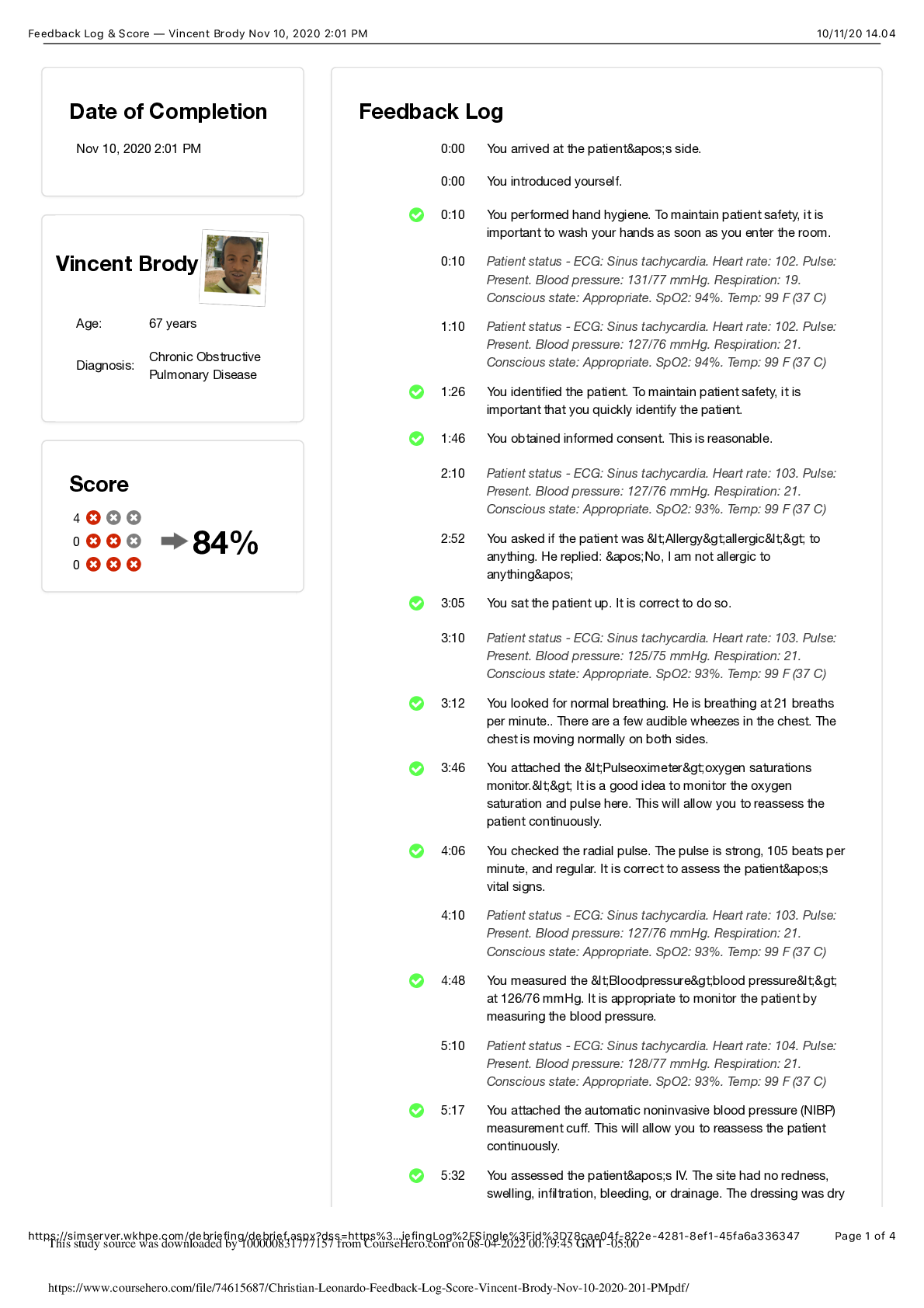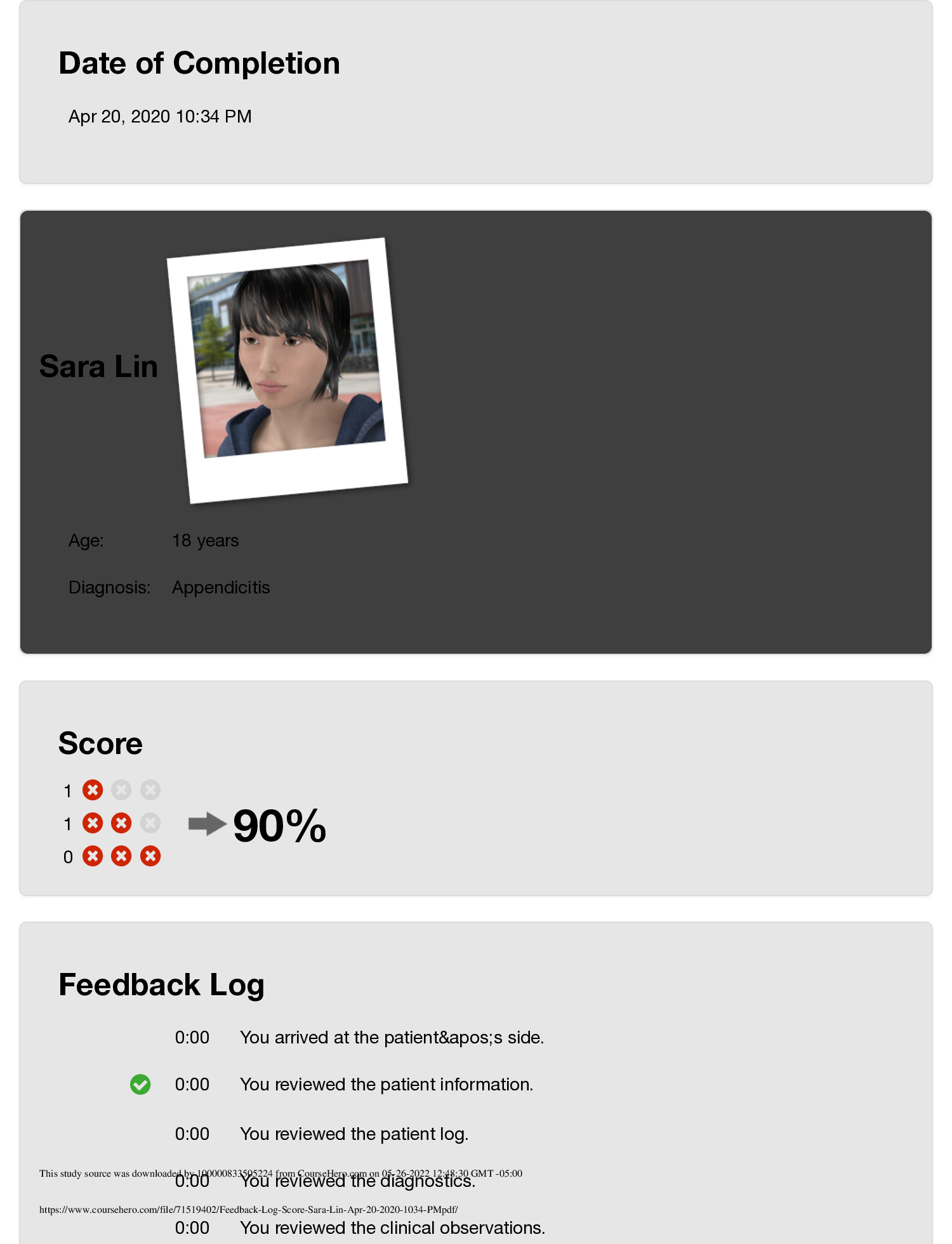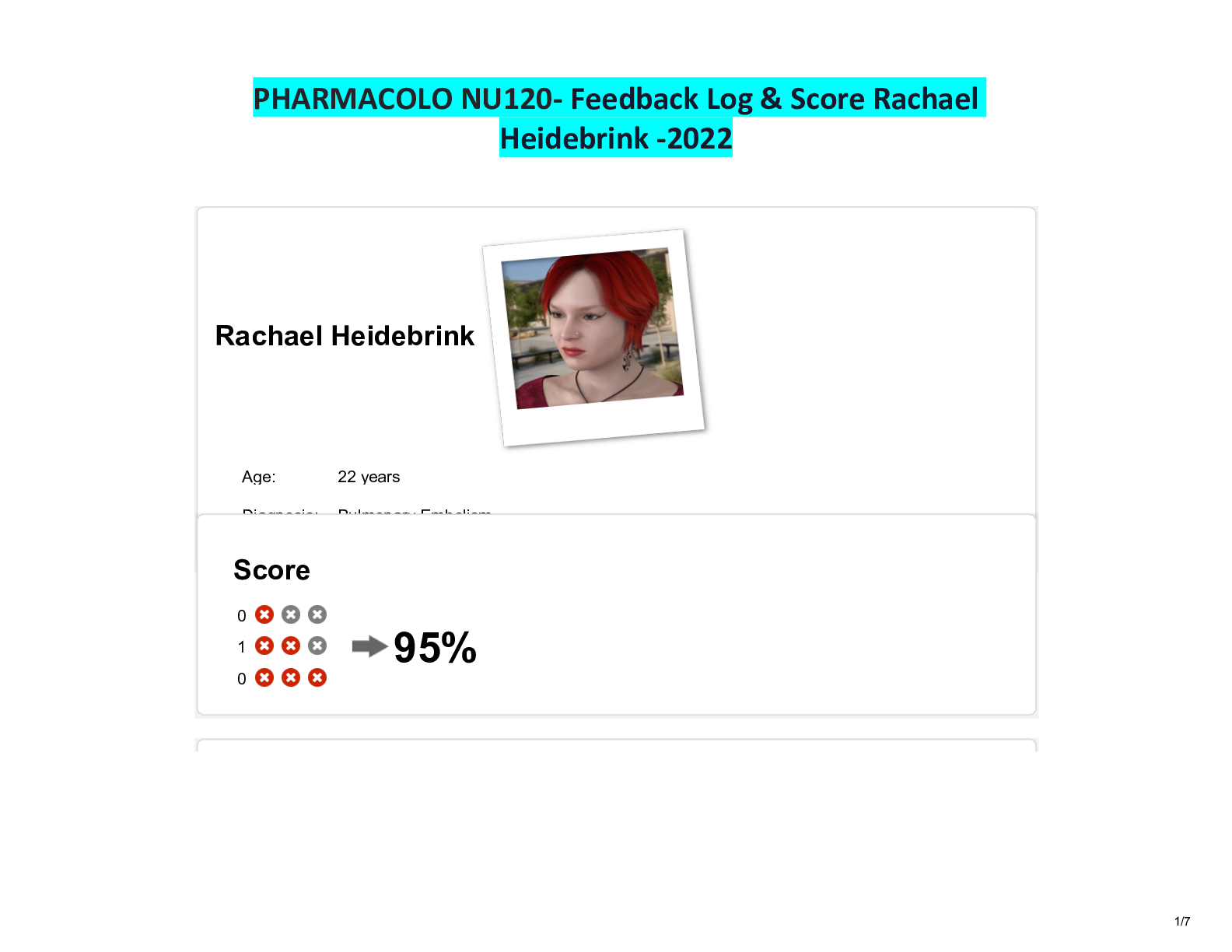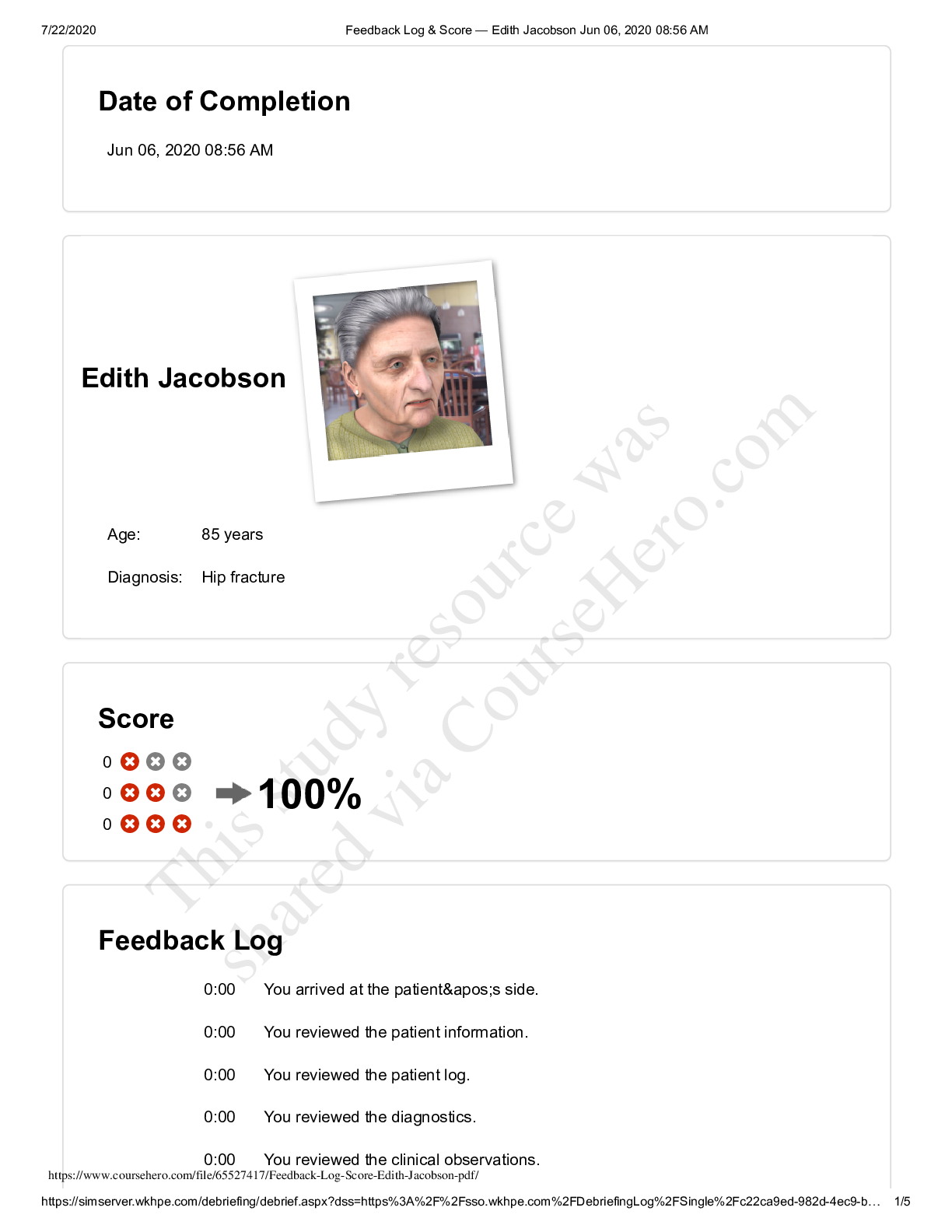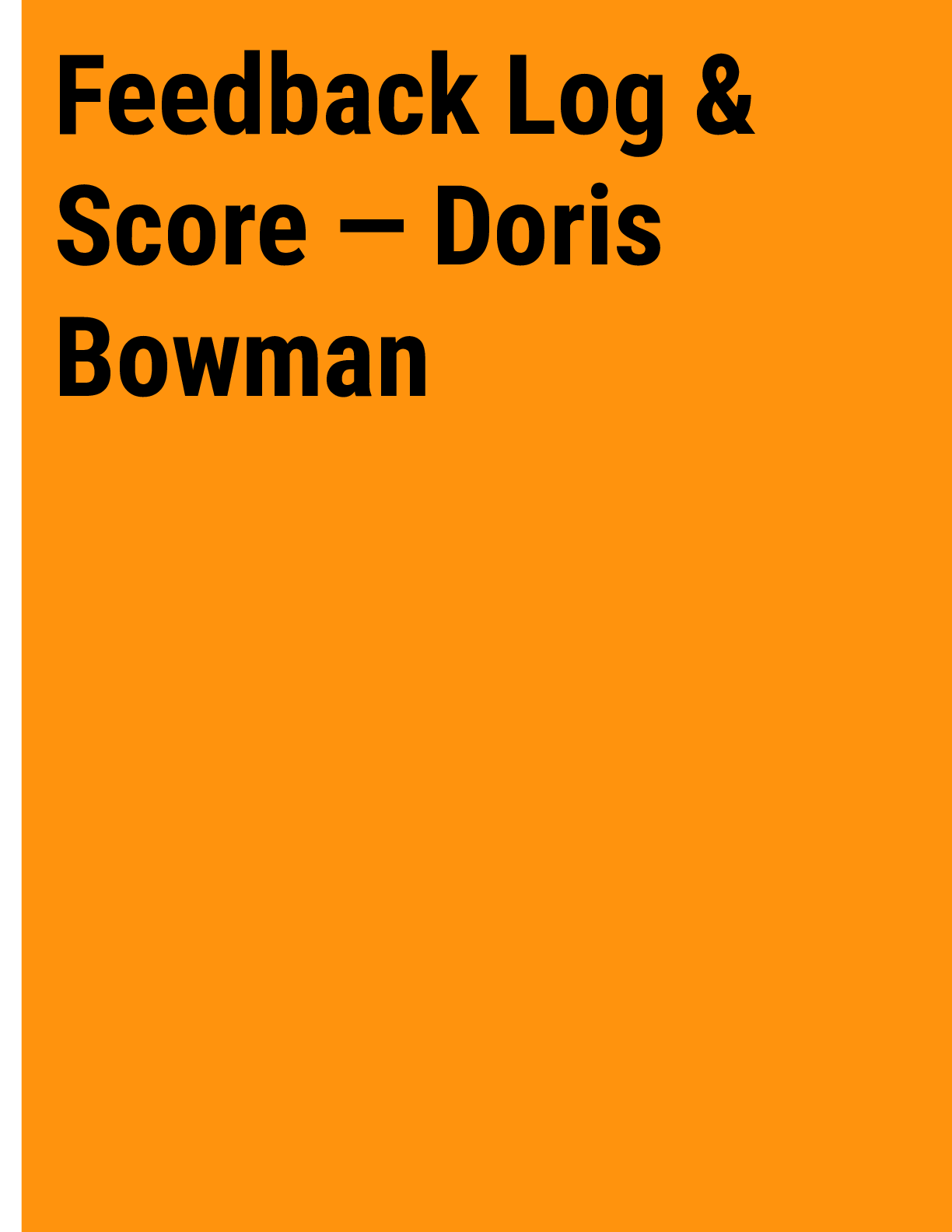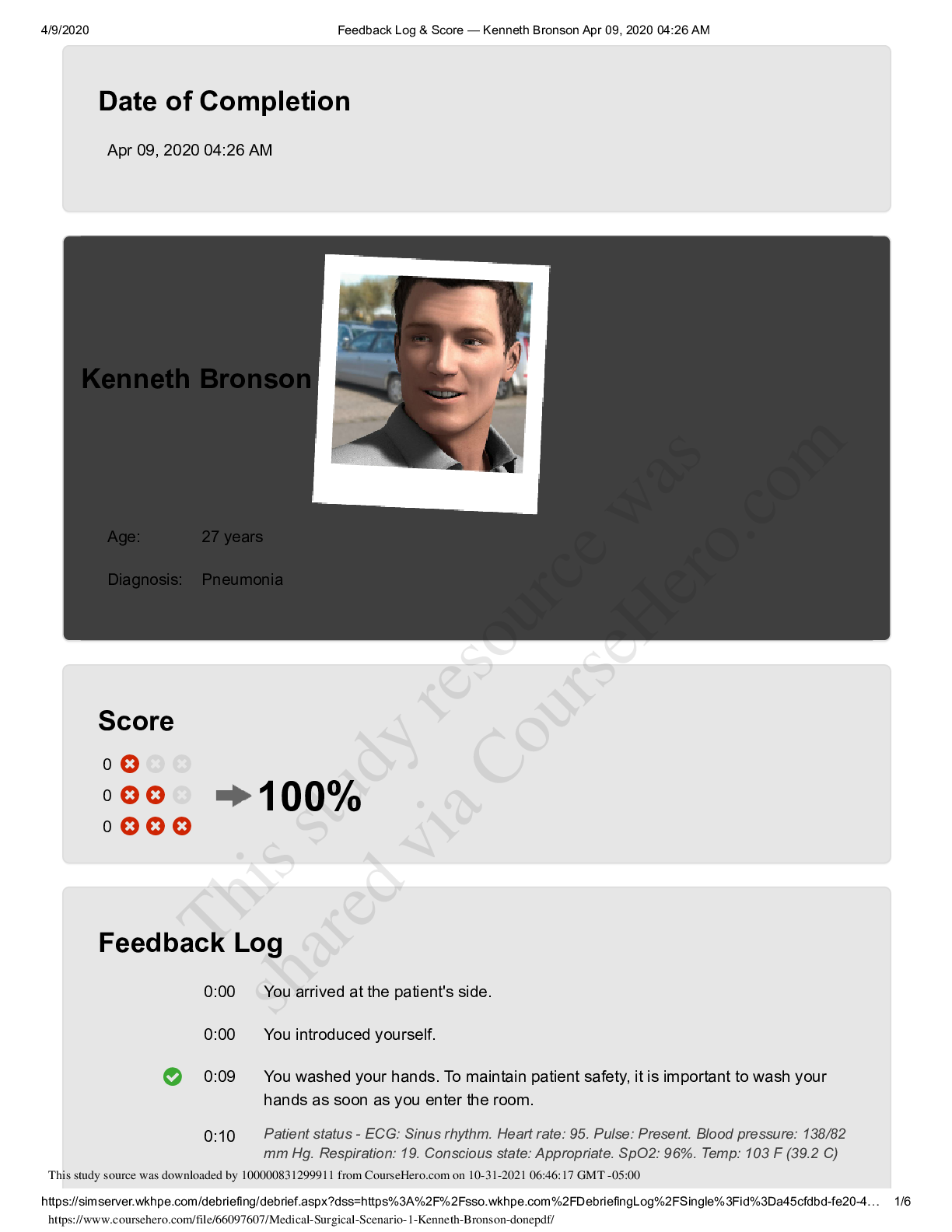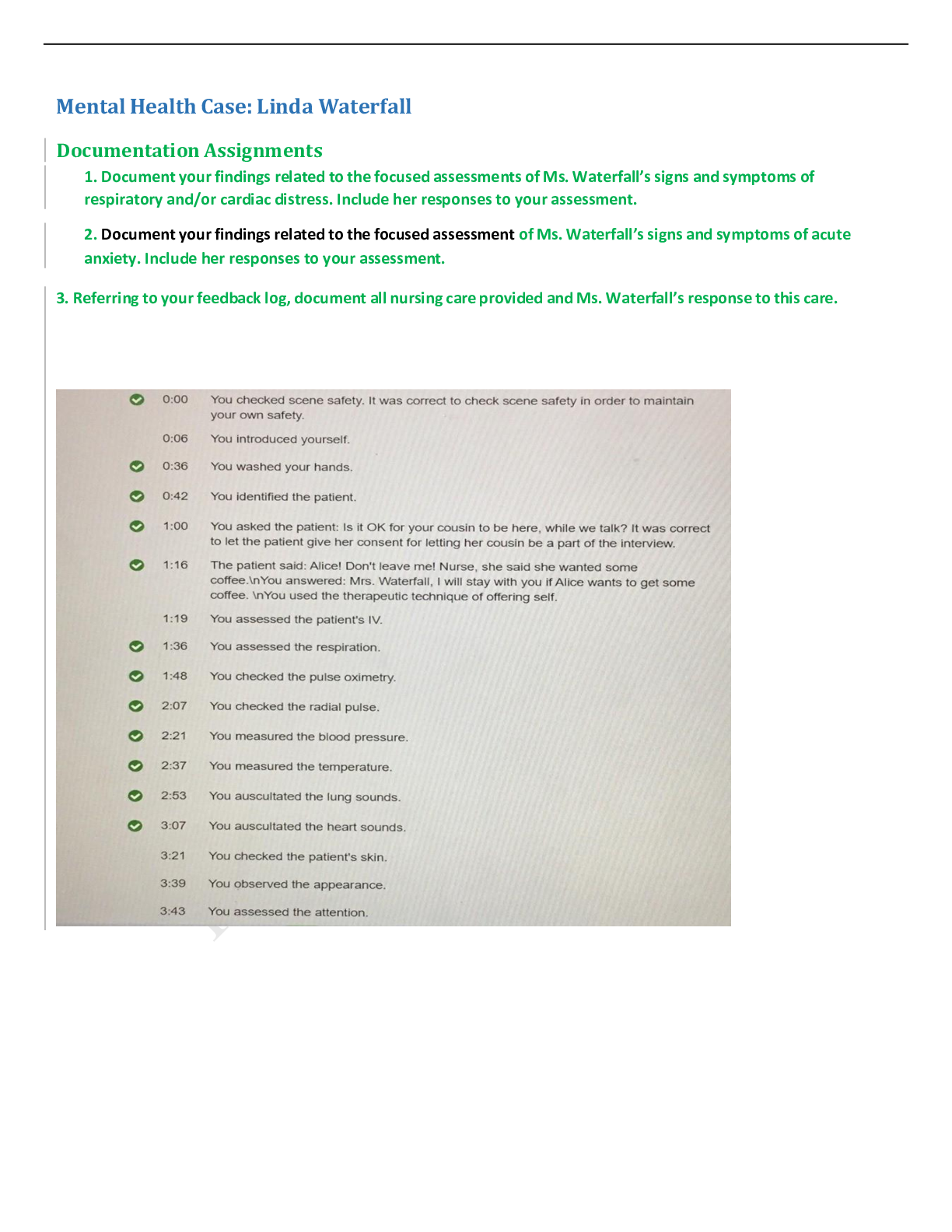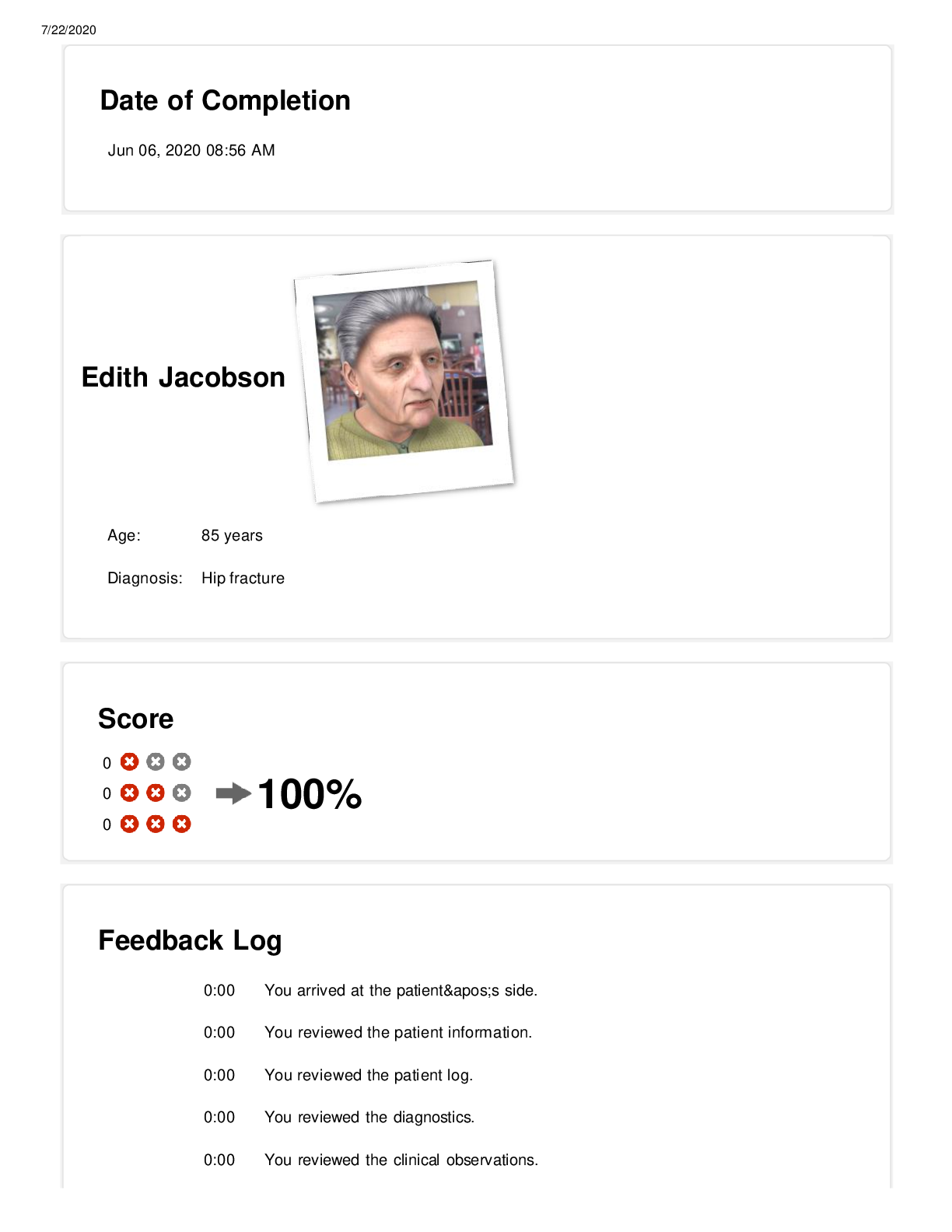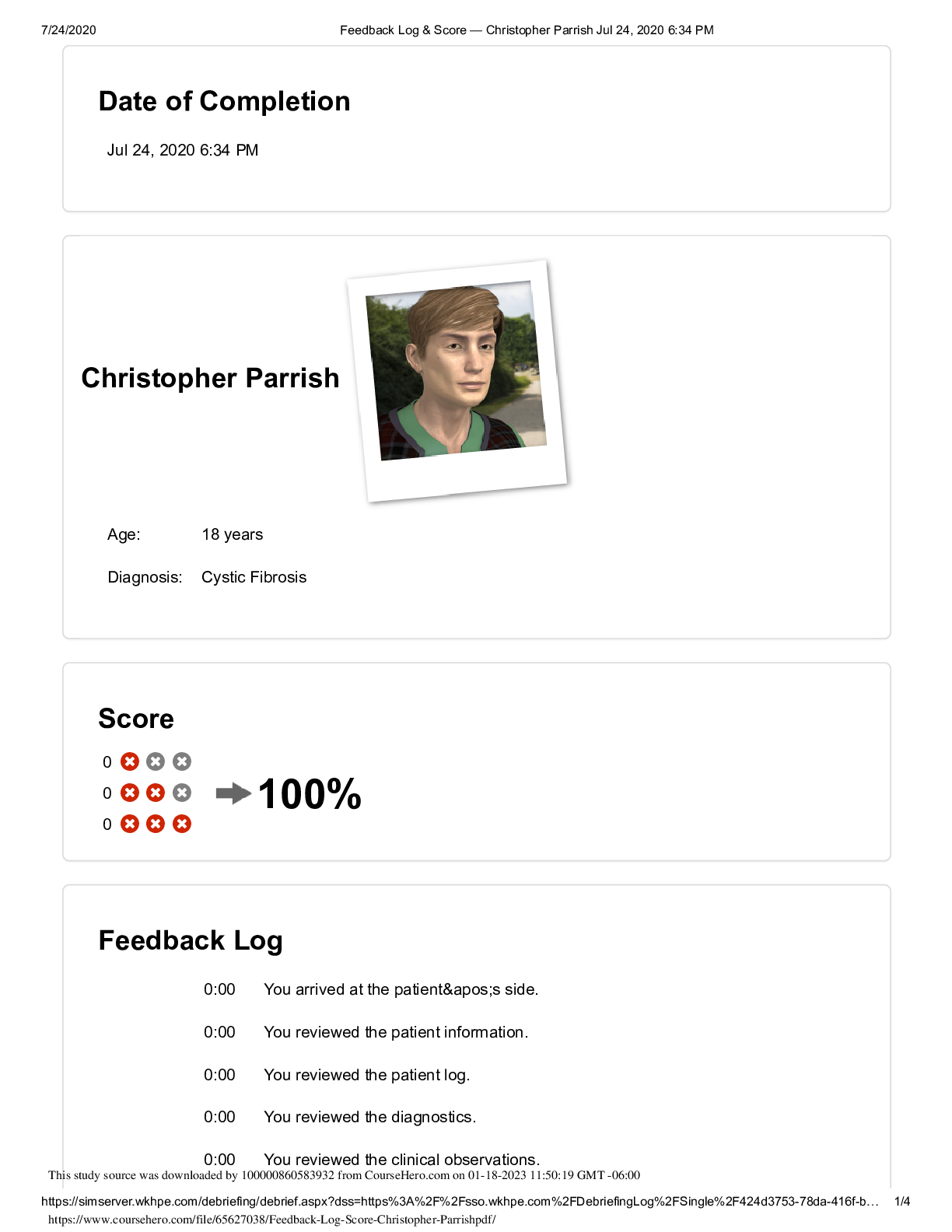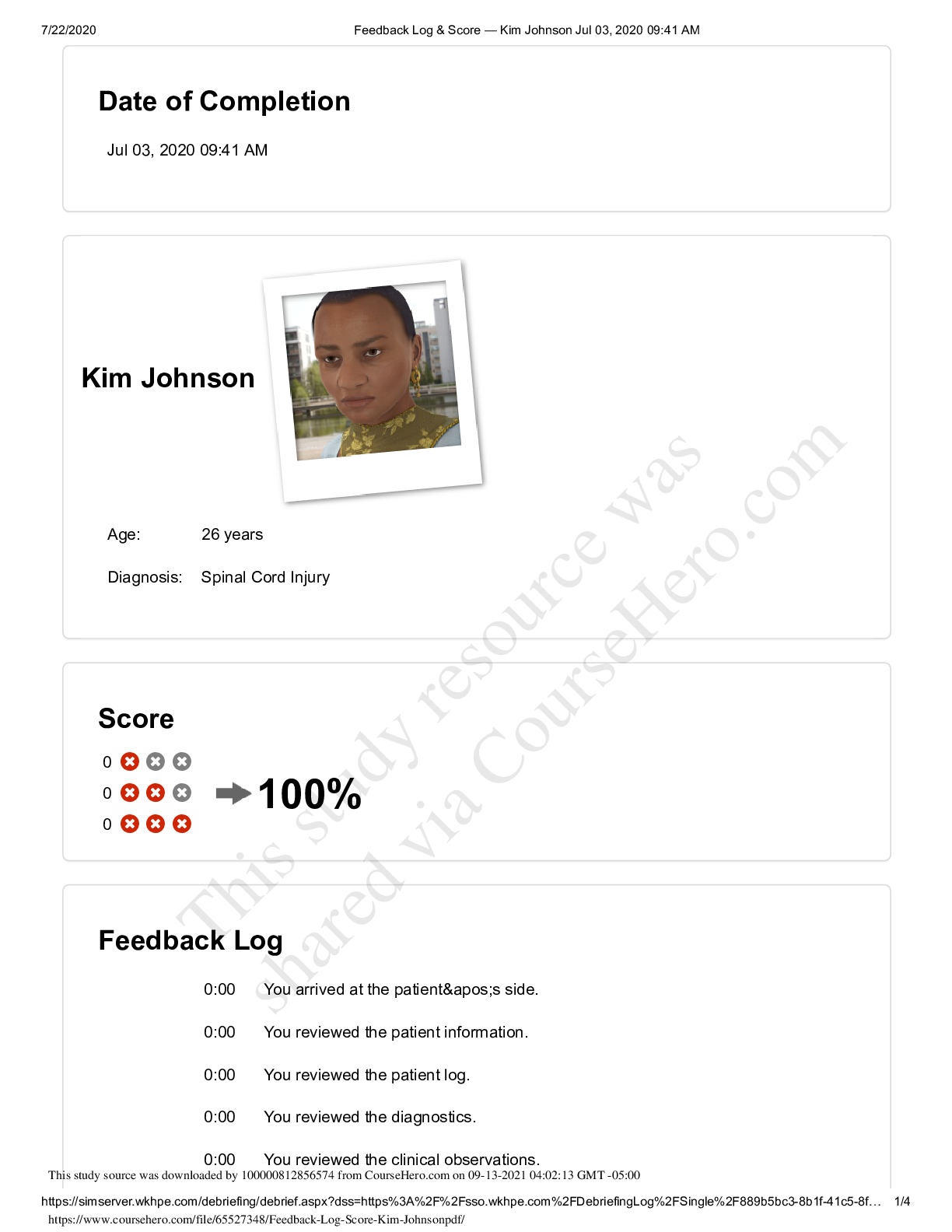NURS 200Feedback Log & Score Josephine Morrow./ Attempted score A+
Document Content and Description Below
0:00 You reviewed the MAR. 0:00 You reviewed the orders. 0:00 You reviewed the intake and output. 0:06 You washed your hands. To maintain patient safety, it is important to wash your hands ... as soon as you enter the room. 0:10 Patient status - ECG: Sinus rhythm. Heart rate: 95. Pulse: Present. Blood pressure: 121/80 mm Hg. Respiration: 20. Conscious state: Appropriate. SpO2: 94%. Temp: 98 F (36.6 C) 1:10 Patient status - ECG: Sinus rhythm. Heart rate: 95. Pulse: Present. Blood pressure: 120/80 mm Hg. Respiration: 20. Conscious state: Appropriate. SpO2: 94%. Temp: 98 F (36.5 C) 1:18 You introduced yourself. This was reasonable. 1:32 You identified the patient. To maintain patient safety, it is important that you quickly identify the patient. 1:41 You asked if the patient was <Allergy>allergic<> to anything. She replied: 'Yes, I am allergic to penicillin.' 1:48 You asked the patient how she felt. She replied: 'I get tired easily.' 1:55 You asked what happened. She replied: 'I have this wound on my leg; it does not seem to heal.' 2:02 You asked the patient if she needed anything. She replied: 'I need help with my legs; they are swollen and hurt. I easily get ulcers.' 2:10 Patient status - ECG: Sinus rhythm. Heart rate: 95. Pulse: Present. Blood pressure: 122/81 mm Hg. Respiration: 20. Conscious state: Appropriate. SpO2: 94%. Temp: 98 F (36.4 C) 2:13 You put on gloves. 2:23 You examined the patient's legs. There is moderate edema and hyperpigmentation of the skin from the knees and down on both sides. There is a dressing covering the skin lesion on the lower leg. There is normal elasticity of the skin. Her color is normal, and she is not sweating. 2:58 You educated the patient about wound care. This was reasonable. 3:10 Patient status - ECG: Sinus rhythm. Heart rate: 95. Pulse: Present. Blood pressure: 123/81 mm Hg. Respiration: 20. Conscious state: Appropriate. SpO2: 94%. Temp: 97 F (36.3 C) 3:21 You assessed the patient's dressing. This is correct. Assessing any dressings the patient has is always important. 3:36 You removed the dressing. This was reasonable. However, make sure to dress the area appropriately again when possible. 3:46 You assessed the patient's ulcer. This was reasonable. The ulcer is shallow, 1 inch in width, and looks mostly pink to red, with no signs of necrosis or infection. 4:10 Patient status - ECG: Sinus rhythm. Heart rate: 95. Pulse: Present. Blood pressure: 120/79 mm Hg. Respiration: 20. Conscious state: Appropriate. SpO2: 94%. Temp: 97 F (36.3 C) 4:10 You irrigated the wound with saline. This was reasonable. 4:21 You applied a dressing. This was reasonable. 4:29 You removed the gloves. 4:35 You washed your hands. 5:10 Patient status - ECG: Sinus rhythm. Heart rate: 95. Pulse: Present. Blood pressure: 120/80 mm Hg. Respiration: 20. Conscious state: Appropriate. SpO2: 94%. Temp: 97 F (36.2 C) 5:50 You educated the patient about improving venous return. This was reasonable. 6:10 Patient status - ECG: Sinus rhythm. Heart rate: 95. Pulse: Present. Blood pressure: 123/81 mm Hg. Respiration: 20. Conscious state: Appropriate. SpO2: 94%. Temp: 97 F (36.2 C) 6:11 You asked the patient if she had any pain. She replied: 'No, I don't have any pain.' 6:28 You applied compression stockings. 6:40 You elevated the patient's legs. This was indicated by order. 6:43 You asked the patient if she had any pain. She replied: 'No, I don't have any pain.' 7:10 Patient status - ECG: Sinus rhythm. Heart rate: 95. Pulse: Present. Blood pressure: 124/81 mm Hg. Respiration: 19. Conscious state: Appropriate. SpO2: 94%. Temp: 97 F (36.1 C) 7:12 You listened to the lungs of the patient. The breath sounds are clear and equal bilaterally. 7:34 You listened to the heart of the patient. This is reasonable. There were regular heart sounds without murmurs. 8:03 You listened to the abdomen of the patient. Normal bowel sounds were heard. 8:10 Patient status - ECG: Sinus rhythm. Heart rate: 95. Pulse: Present. Blood pressure: 123/81 mm Hg. Respiration: 19. Conscious state: Appropriate. SpO2: 94%. Temp: 97 F (36.1 C) 8:23 You attached the <Pulseoximeter>pulse oximeter.<> Consider assessing the patient's pulse oximetry as part of the first assessments you do. 8:35 You checked the <Temperature>temperature<> at the ear. The temperature was 97 F (36.1 C). Consider assessing the patient's temperature as part of the first assessments you do. 8:44 You looked for normal breathing. She is breathing at 19 breaths per minute. The chest is moving equally. Consider assessing the patient's breathing and respiratory rate as part of the first assessments you do. 9:06 You checked the radial pulse. The pulse is strong, 95 per minute, and regular. It is pulse as part of the first assessments you do. 9:10 Patient status - ECG: Sinus rhythm. Heart rate: 95. Pulse: Present. Blood pressure: 122/81 mm Hg. Respiration: 19. Conscious state: Appropriate. SpO2: 94%. Temp: 97 F (36.1 C) 9:30 You checked the radial pulse. The pulse is strong, 95 per minute, and regular. 9:45 You disconnected the <Pulseoximeter>pulse oximeter.<> 10:00 You measured the <Bloodpressure>blood pressure<> at 122/82 mm Hg. Consider assessing the patient's blood pressure as part of the first assessments you do. 10:10 Patient status - ECG: Sinus rhythm. Heart rate: 95. Pulse: Present. Blood pressure: 123/81 mm Hg. Respiration: 19. Conscious state: Appropriate. SpO2: 94%. Temp: 97 F (36.1 C) 10:18 You asked the patient if she had any pain. She replied: 'No, I don't have any pain.' 10:22 A patient handoff was performed. This patient is an obese, 80-year old female in a skilled nursing home care facility with a venous stasis ulcer. The students are expected to assess the leg wound, assess the patient's pain, and perform a dressing change. The students are also expected to assess lab values, and provide patient education on interventions to promote venous return. Venous stasis ulcers occur in the lower extremities from impaired venous circulation and are usually shallow with an irregular shape over bony prominences, particularly the medial malleolus. Hypertension in the venous system of the legs can lead to pain, edema, varicose veins, skin changes, dermatitis, hyperpigmentation, and venous stasis ulcer formation. The most important aspect of venous ulcer treatment is prevention with adequate compression therapy, using an elastic bandage and antiembolism stocking, and optimizing venous return. The surrounding skin should be inspected daily, keeping it clean and well-lubricated. Legs should be elevated above the heart to reduce edema. You got 100% [Show More]
Last updated: 1 year ago
Preview 1 out of 4 pages
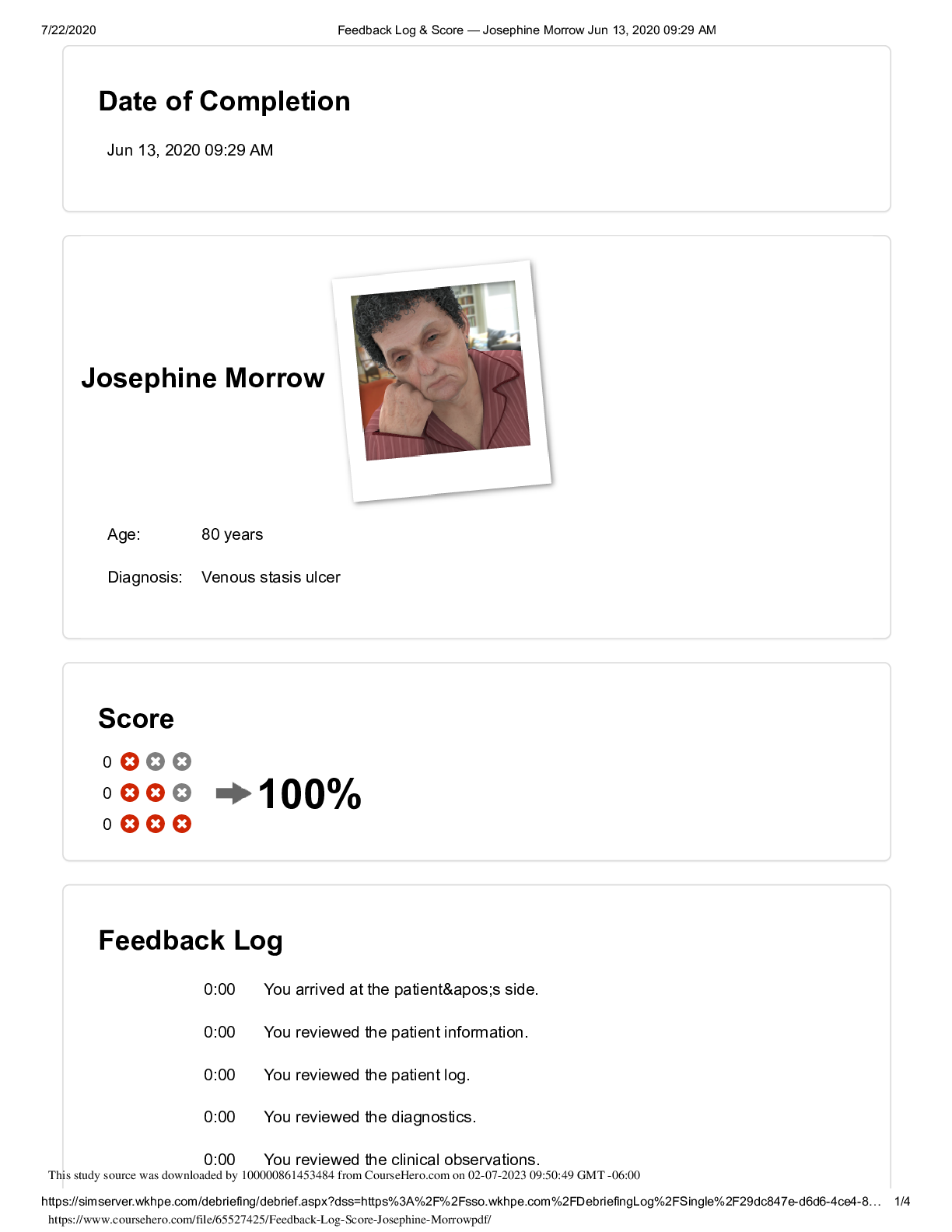
Reviews( 0 )
Document information
Connected school, study & course
About the document
Uploaded On
Aug 02, 2021
Number of pages
4
Written in
Additional information
This document has been written for:
Uploaded
Aug 02, 2021
Downloads
0
Views
49


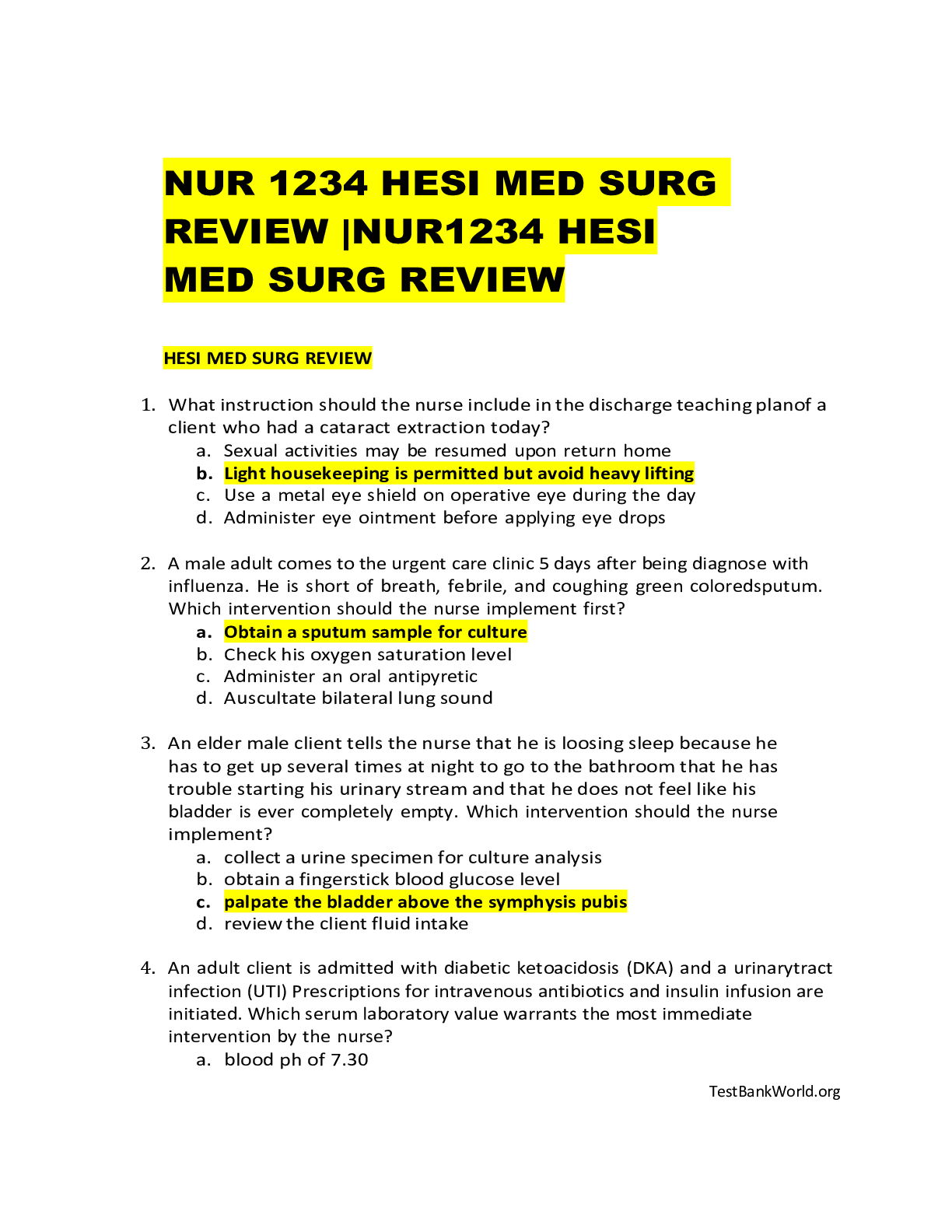
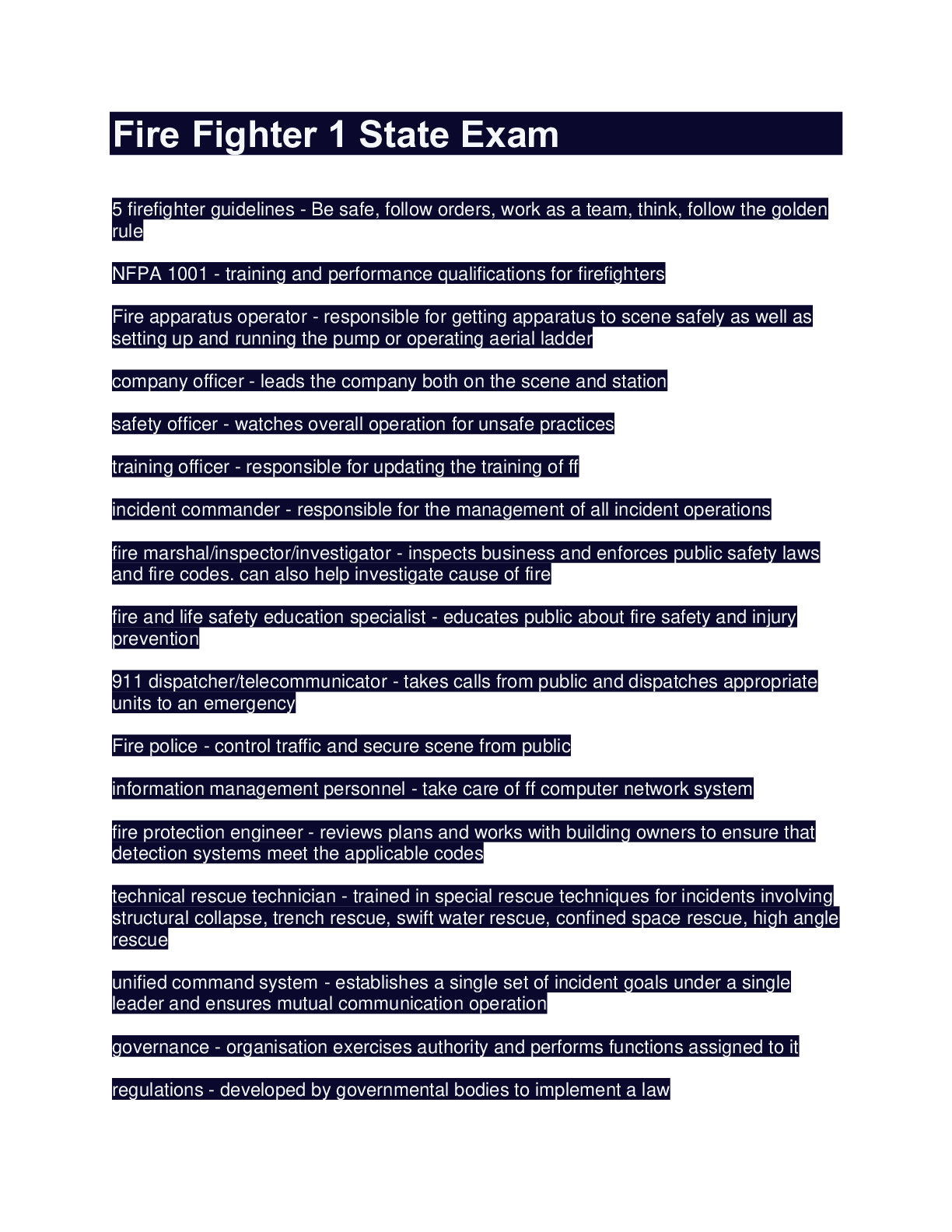
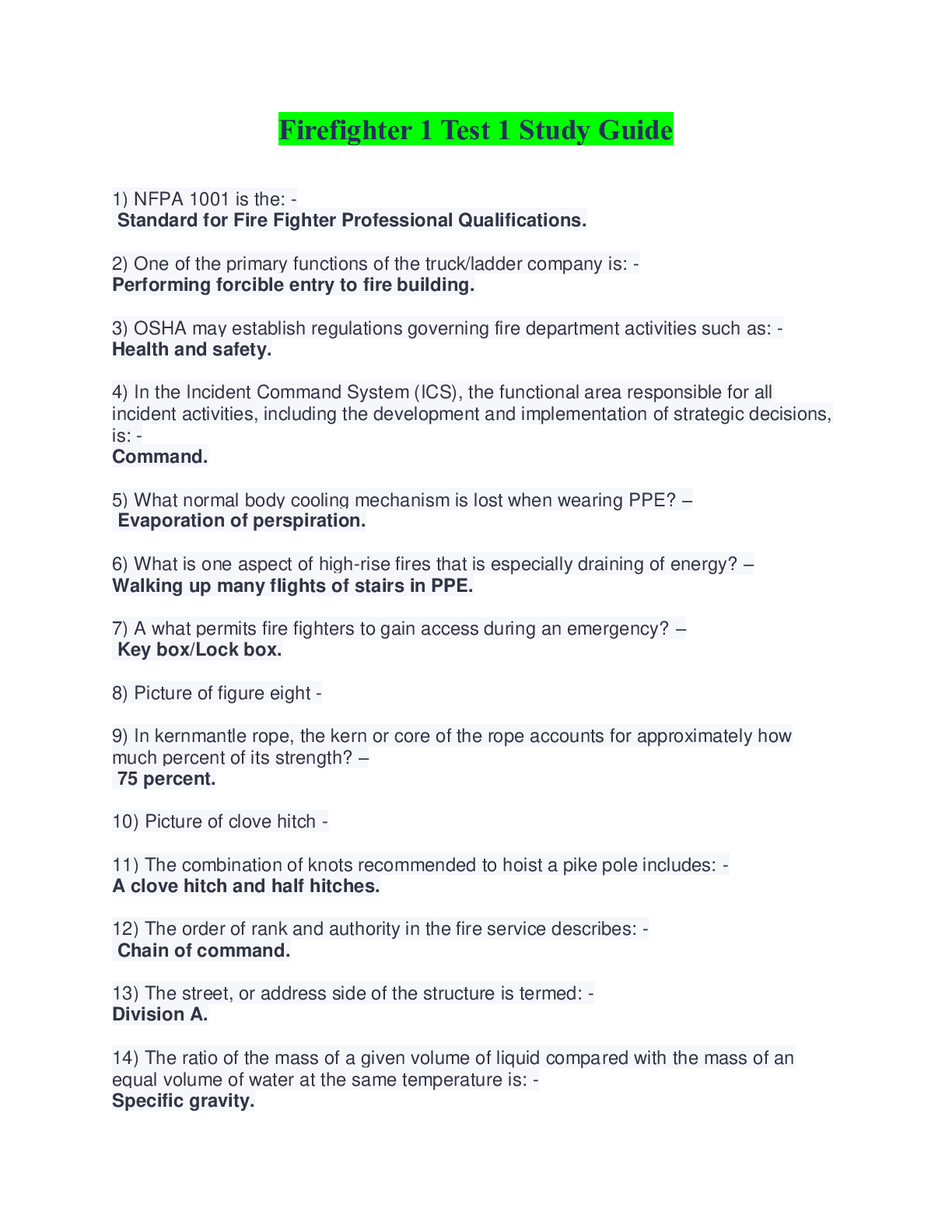
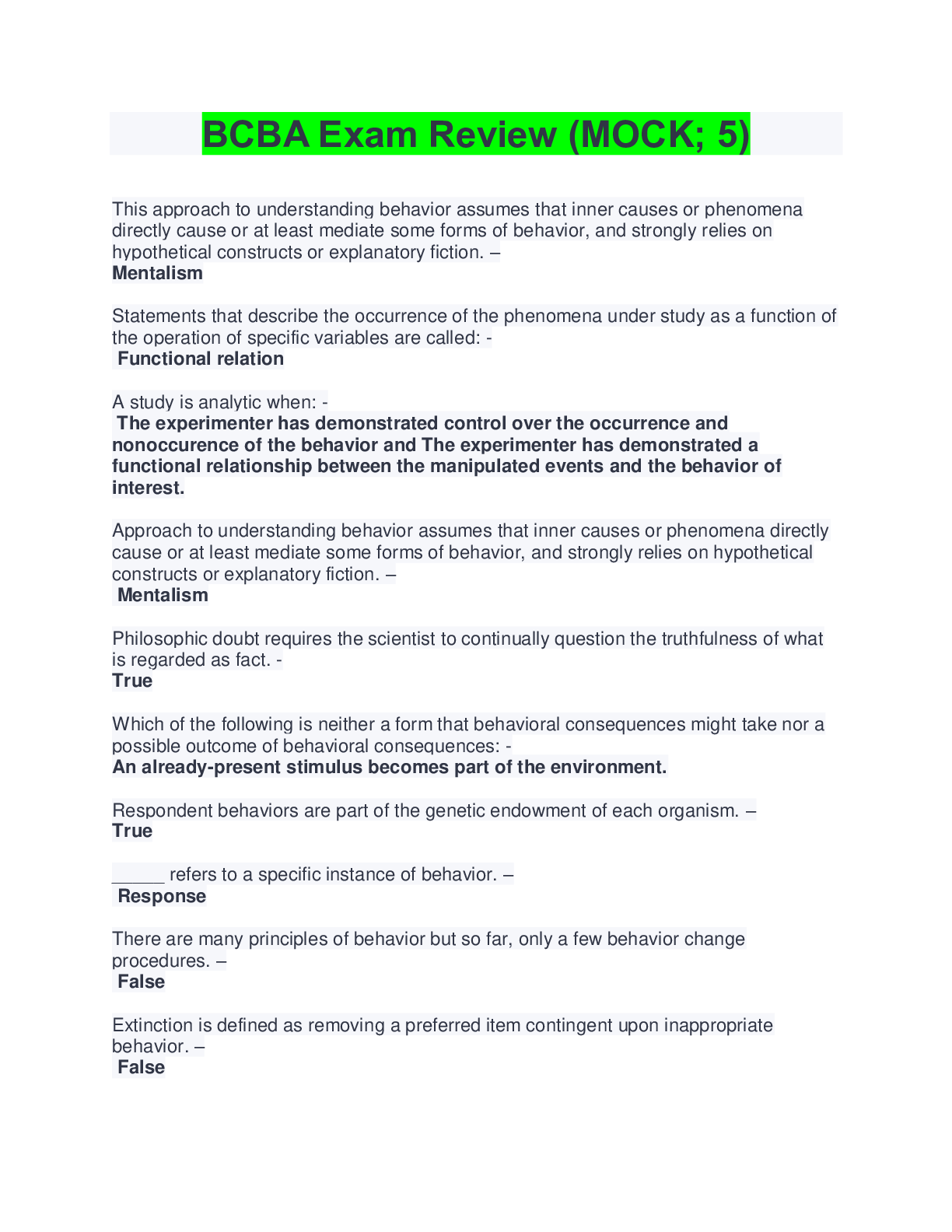

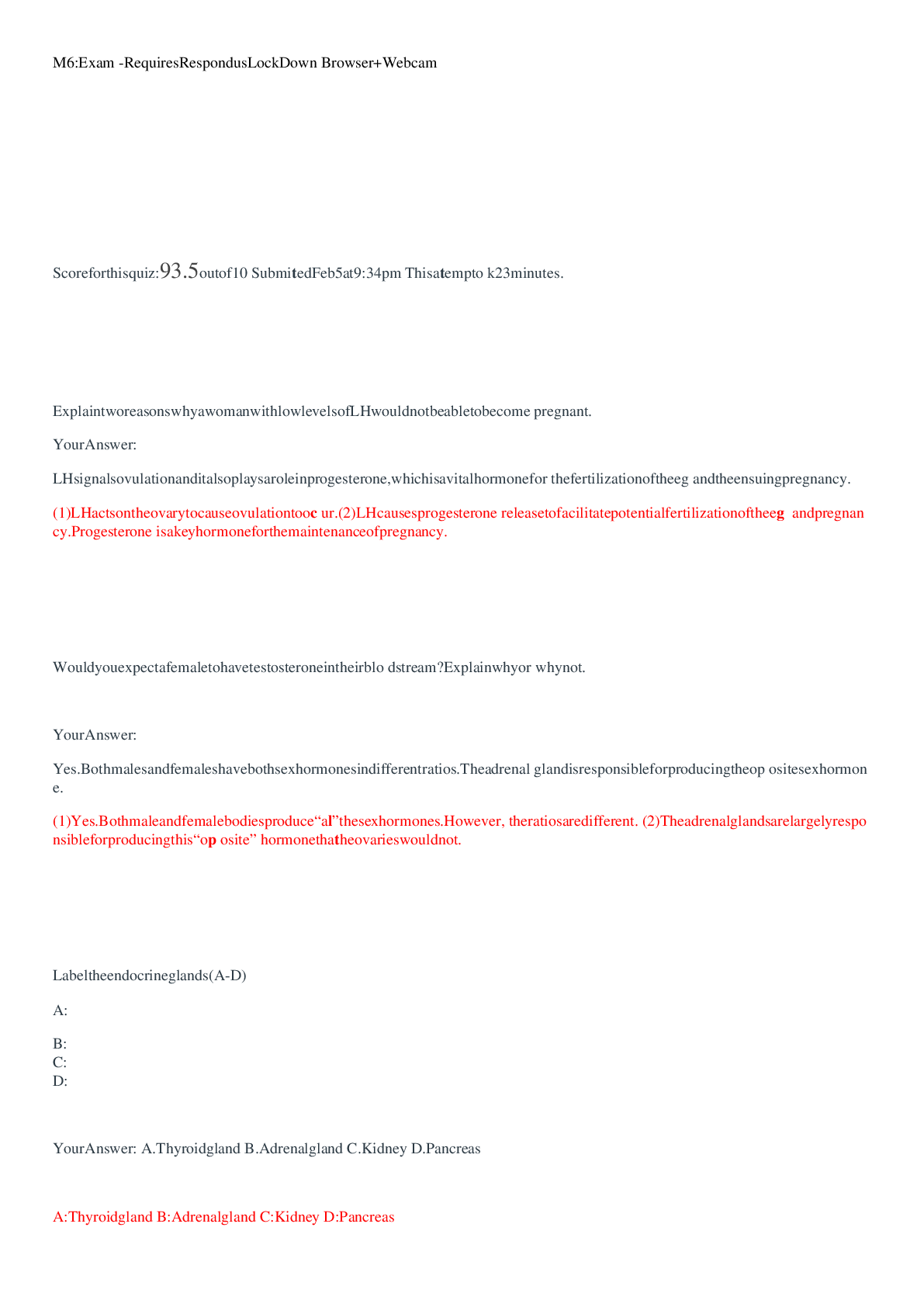
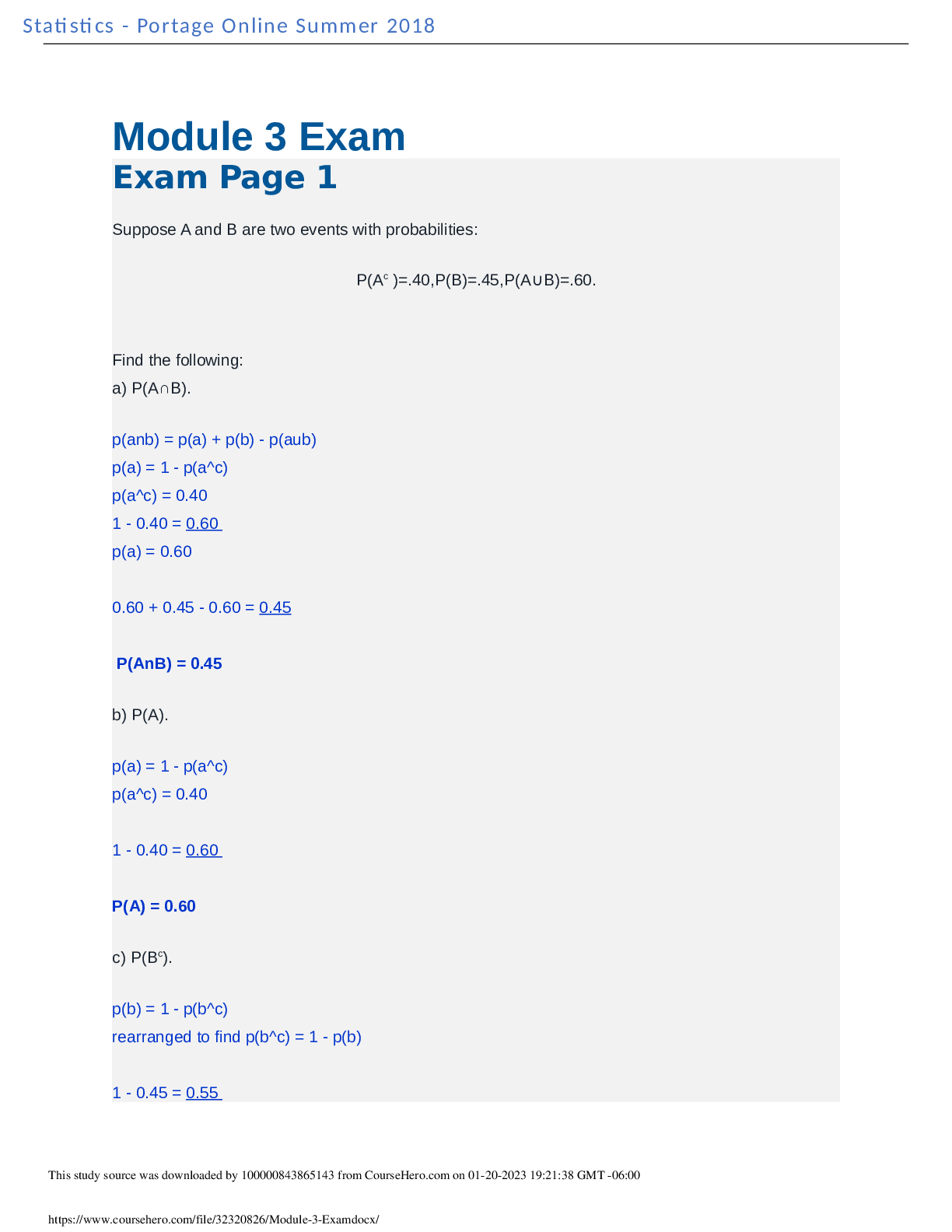
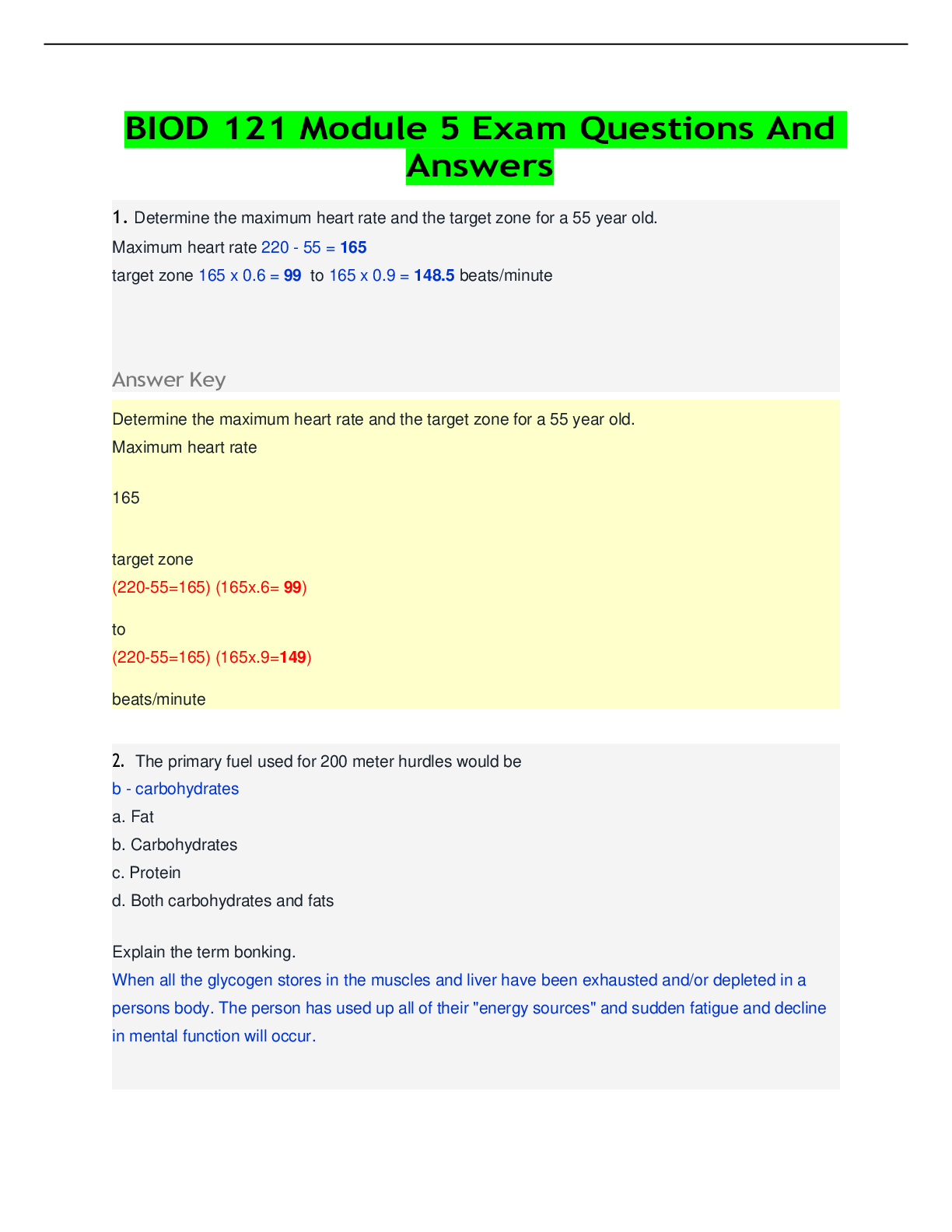
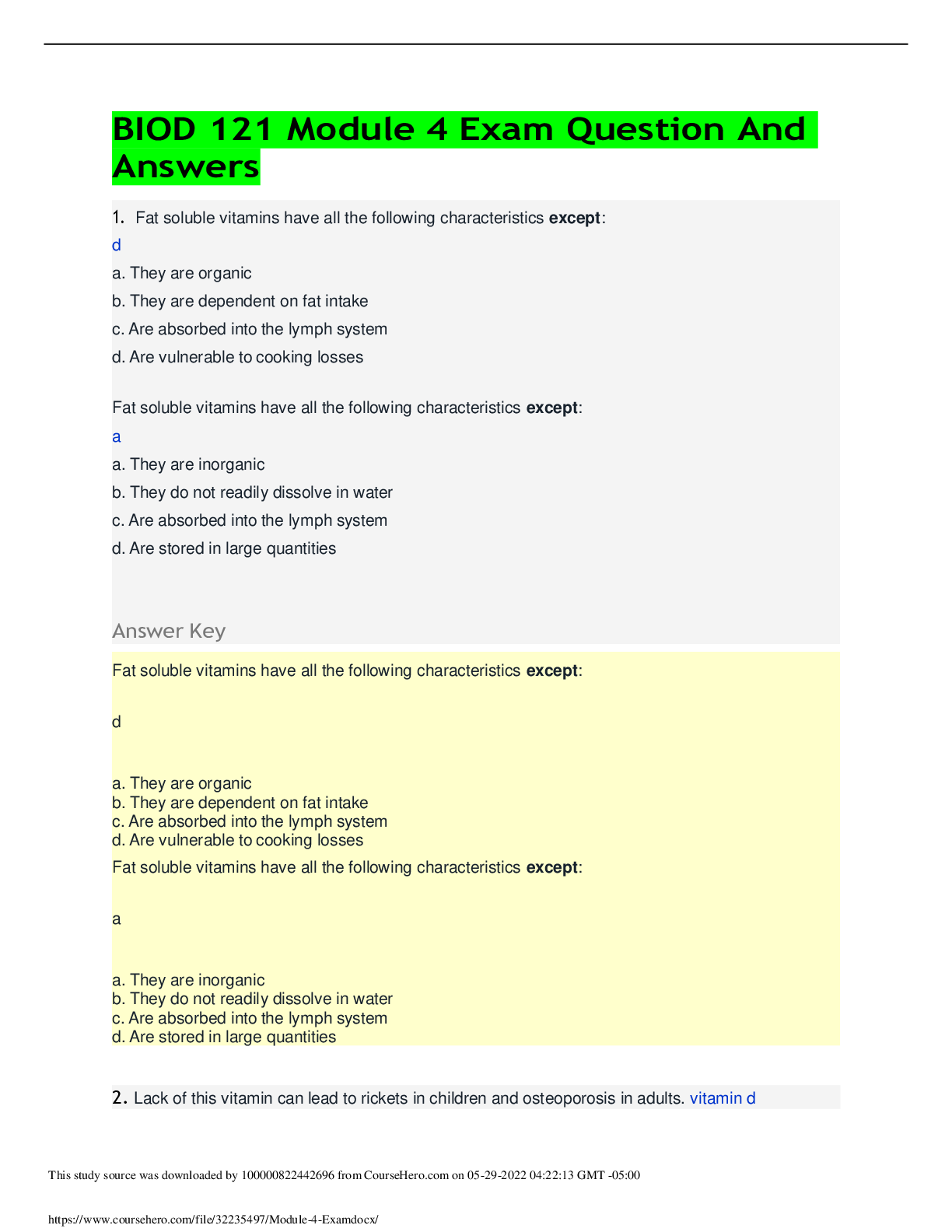
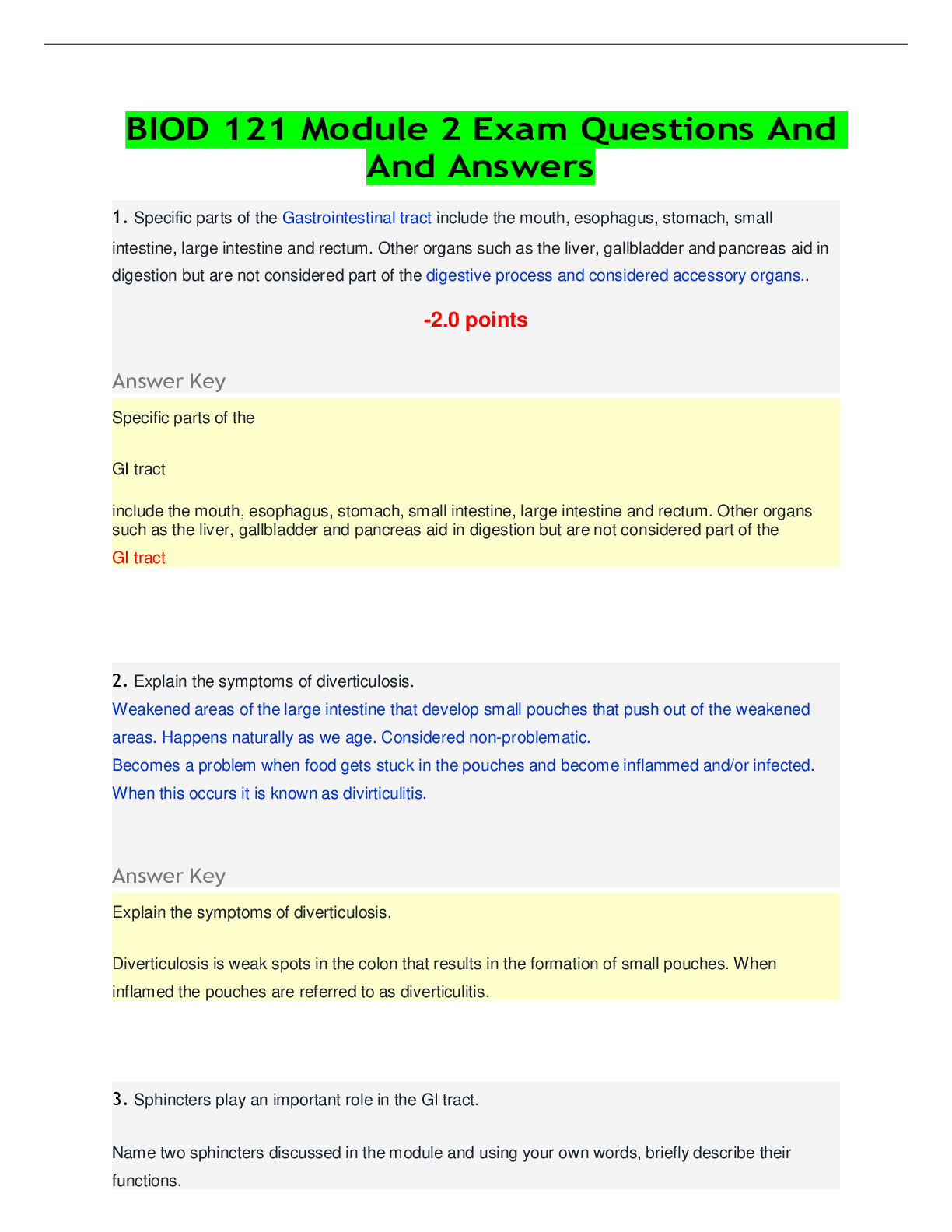
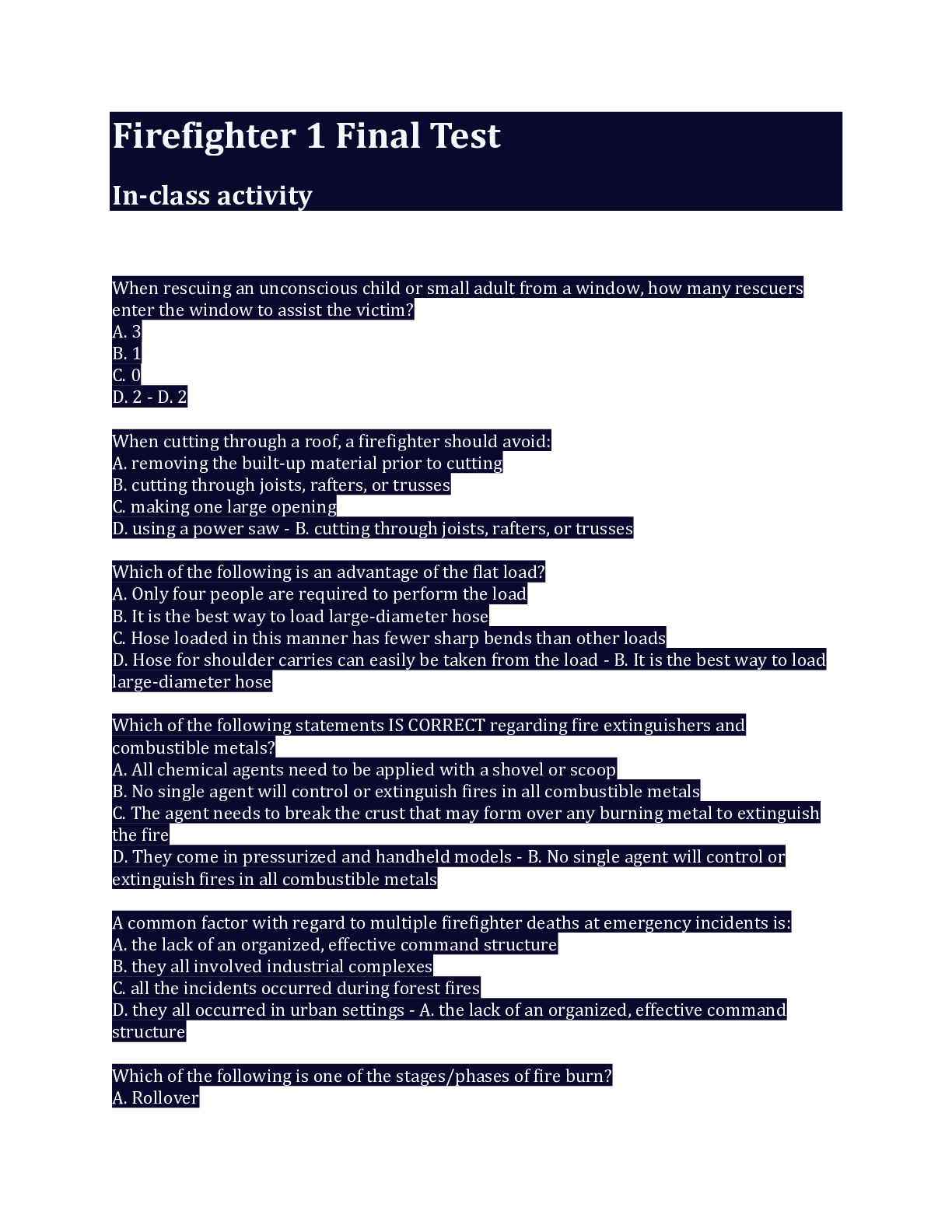
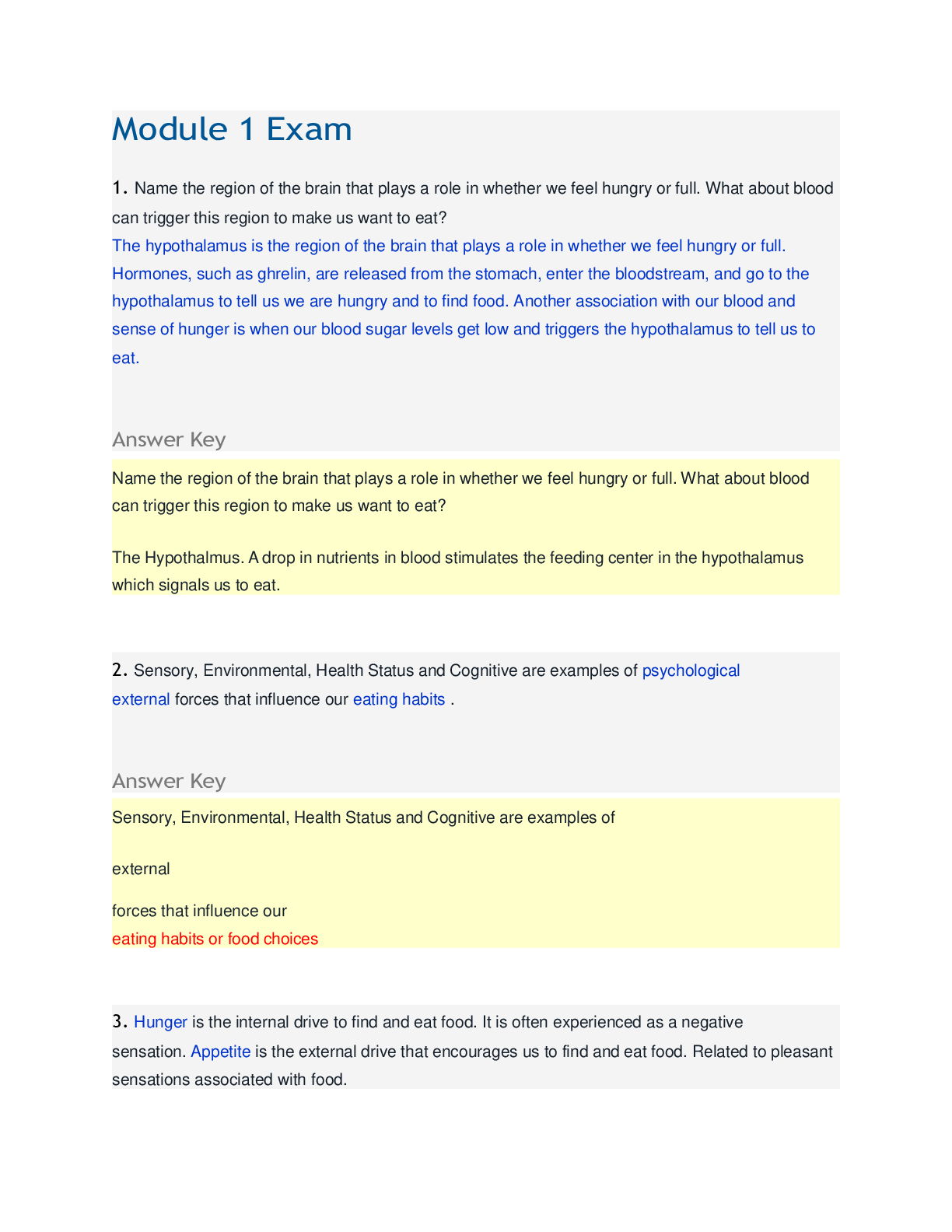
 (1).png)
 (1).png)
 (1).png)
